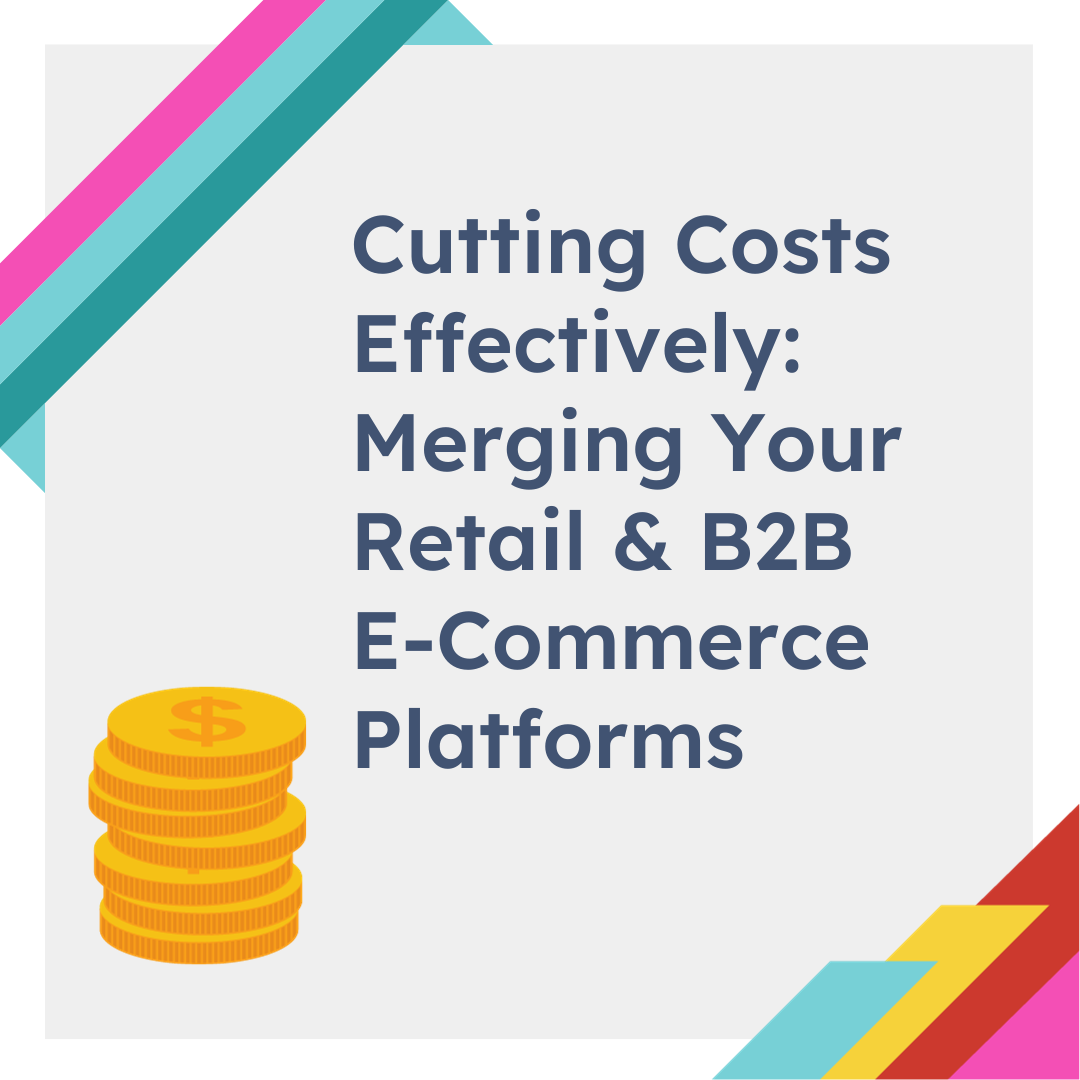The significance of e-commerce in shaping business transactions is undeniable. Retail and B2B (business-to-business) e-commerce platforms have traditionally been distinct entities, each presenting unique challenges and incurring specific costs. However, in the pursuit of efficiency and cost-effectiveness, a growing trend is emerging: the integration of retail and B2B e-commerce platforms. The digital era has seen a meteoric rise in e-commerce, fundamentally altering how businesses operate. This shift is especially pronounced in the context of the COVID-19 pandemic, which
accelerated the adoption of online business models and emphasised the need for digital agility in both retail and B2B sectors.
This blog will explore the numerous advantages of this strategy, focusing on how it can effectively cut costs and optimise operations.
What is B2B Ecommerce?
At its core, B2B e-commerce involves transactions between two businesses, taking place online. It is about expanding customer reach by leveraging the power of the internet to conduct sales and marketing. B2B commerce is inherently more complex than retail due to the volume of products, pricing negotiations, and longer sales cycles involved. These include custom pricing, bulk orders, and long-term contracts. The digitalisation of these transactions has enabled businesses to reach a broader market, enhance their sales strategies, and improve customer relations.
Embracing B2B e-commerce means harnessing the internet’s reach to expand your market presence and streamline sales and marketing efforts.
The Strategic Move: Merging Retail and B2B E-Commerce
Combining retail and B2B e-commerce platforms may initially seem challenging, but it presents an excellent opportunity for cost reduction and efficiency. The integration of the two platforms presents a blended solution that addresses the needs of both sectors. This synergy allows for shared technological advancements, streamlined customer service, and a
cohesive brand experience across different market segments. Here are the key benefits:
Unified Management Systems
Merging the platforms reduces operational overhead by merging inventory management, product updates, and customer service. This integration leads to a more streamlined and cost-effective operational process, as well as more efficient supply chain management.
SEO and Marketing Efficiencies
A single platform means a combined SEO and marketing strategy, allowing for more focused efforts and better use of marketing resources. This approach targets a wider audience with less content, maximising the effectiveness of your marketing investments. Essentially, it is making it easier to target both retail and business customers.
Cost-Effective Customer Acquisition and Retention
Operating a single e-commerce platform can lower advertising costs and enhance customer retention. By providing a comprehensive one-stop solution for all customers,
the platform improves user experience and fosters brand loyalty.
Streamlined Analytics
A combined platform offers integrated analytics, giving you a clearer understanding of consumer behaviour. This integration helps in making more informed decisions and aligning your business strategy more cohesively. Businesses can track customer preferences, and buying patterns, which are crucial for strategic planning and maximising long-term profitability.
Technology Investments
Investing in technology upgrades, security measures, and compliance is more economical for one site compared to maintaining two separate platforms. This consolidation can lead to significant financial savings and better resource allocation. These savings include areas like cybersecurity, regulatory compliance, and technology upgrades.
Enhanced Customer Experience
A merged platform, offering a diverse range of products in an organised manner, can significantly boost customer satisfaction. It attracts more business buyers who value a streamlined, user-friendly retail experience. A combined e-commerce platform enhances the customer experience by offering a seamless transition between retail and B2B services. This helps in building a stronger brand identity and customer loyalty.
Conclusion
Merging your retail and B2B e-commerce platforms is more than a cost-saving measure; it’s a strategic decision that can revolutionise your business operations. This not only streamlines processes but also enhances the overall customer experience, positioning your business for greater competitive advantage in the dynamic digital marketplace. The evolution is driven by emerging technologies such as AI, machine learning, and blockchain, which promise to further enhance the efficiency, security, and personalisation of e-commerce experiences.
Embracing this integrated approach to B2B commerce is not just a trend but a forward-thinking strategy for businesses aiming to stay ahead in the digital age.
As part of a series on B2B topics, this article highlights the importance of integrating B2B elements into e-commerce strategies. Though challenging, successful B2B e-commerce strategies can significantly scale a business. If you would like to find out more about Studioworx’s expertise in this field, get in touch to discuss how we can specifically help your business.
